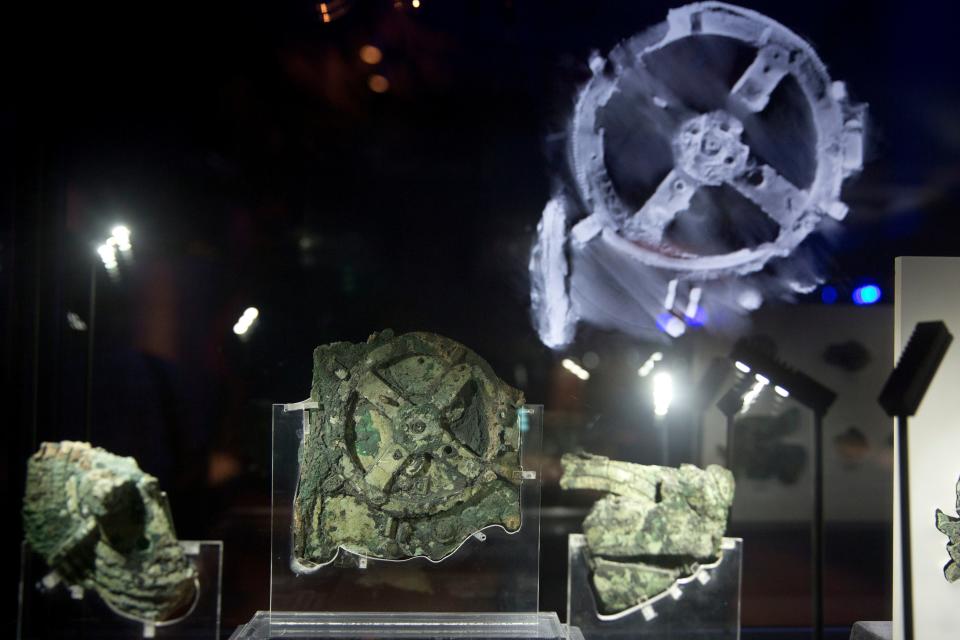YouTuber helps researchers solve the mystery of a 2,000-year-old 'computer'

Researchers think they've solved the 2,200-year-old mystery of the Antikythera mechanism.
The ancient device, found in a shipwreck, likely followed a Greek lunar calendar.
They used statistical modeling techniques typically used to study ripples in space-time.
Last year, Graham Woan knew just how he wanted to spend his Christmas break: trying to solve the 2,200-year-old mystery of the oldest known "computer" in the world.
Known as the Antikythera mechanism, the bronze device is a mechanical computer with interlocking gears. In the second century BCE, a user would have used its rings and evenly spaced holes to chart future celestial events, such as eclipses.
But how many of those evenly spaced holes existed has been a mystery and holds the key to determining exactly how the computer functioned.
YouTuber Chris Budiselic has long been fascinated by the mechanism and started creating his own version seven years ago but wasn't sure how many holes to include.
Based on some of Budisic's published research, University of Glasgow astronomers, including Woan, turned to statistical modeling techniques to find the answer.
"It struck me as an interesting problem, and one that I thought I might be able to solve in a different way during the Christmas holidays, so I set about using some statistical techniques to answer the question," Woan said in a university press release.
Based on the number of holes, the researchers found, the device follows a lunar calendar instead of an Egyptian one, as some previous research suggested.
A shipwreck full of ancient treasures

The Antikythera mechanism is just one intriguing finding from a 2,000-year-old shipwreck that divers first discovered in 1900. Divers waiting out a storm found the remains near the Greek island of Antikythera.
Excavations have uncovered three life-size marble horse statues, coins, jewelry, and other treasures, according to the Woods Hole Oceanographic Institute. But the Antikythera mechanism is perhaps the most unique discovery of them all.
It's about the size of a shoebox, is broken into six pieces, and has eroded from its time underwater. The mechanism is so sophisticated that some thought it had to be a modern device that got mixed in with the ancient artifacts, according to Derek John de Solla Price. He helped discover the device's function in the 1970s.
X-ray images from 2005 gave researchers new details about the device. And in 2020, Budiselic and his colleagues used the images to measure the positions of the holes and proposed the mechanism had between 347 and 367 holes. If it had closer to 350 holes, it would have followed the lunar calendar. If it had 365, it would have been modeled on the Egyptian calendar.
But it was difficult to nail down an exact number because of the device's diminished condition.
After learning about Budiselic's research, Woan first used Bayesian analysis, calculating different probabilities of the total number of holes based on the position and number of holes in the remaining pieces of bronze. He learned that it was hundreds of times more likely that the device had 354 holes than 360 holes.
Woan's colleague Joseph Bayley followed up the research by modifying techniques used to study gravitational waves, which are ripples in space-time. His results agreed with Woan's; there were likely either 354 or 355 holes in the ring.
In other words, there's a much higher probability that the mechanism tracked the Greek lunar year instead of the Egyptian one. It was capable of calculating planets' positions incredibly accurately for its time.
The finding reinforces the impressive craftsmanship and knowledge it took to create the device. "The precision of the holes' positioning would have required highly accurate measurement techniques and an incredibly steady hand to punch them," Bayley said in the press release.
The two have published their research in the peer-reviewed Horological Journal.
Read the original article on Business Insider


